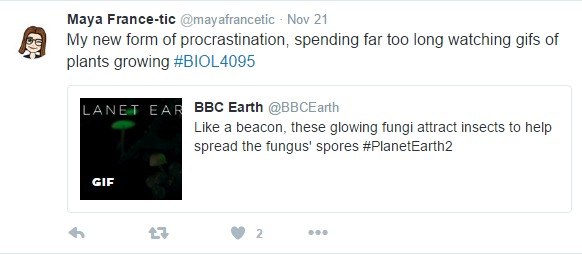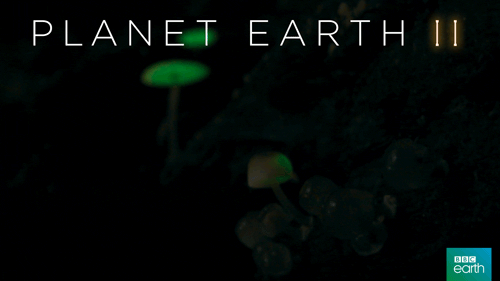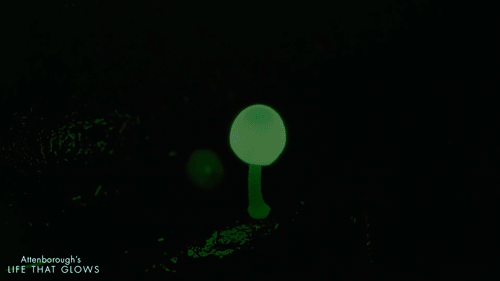During all the wonderful student lead presentations this month, one of the major things I leaned that will stick with me for the rest of my life is how amazing plant growing gifs are! While every presentation was informative and unique in its own way but those gifs really got me.


BBC Earth Part 2 which I am quite looking forward to watching once exams are over had this gif of bioluminescent mushrooms growing. While being incredibly hypnotic, also carry a fascinating story behind them. New research has come out from Brazil in the journal of Current Biology with findings that mushroom are bioluminescent to attract insect to further their long range dispersal. While most plants relay on wind to disperse seeds or spores, these mushrooms make light to draw in insect such as flies, beetles and wasps for them to carry their spores to colonize new habitats. A problem with wind dispersal for a fungus is that they are remain close to the ground at their maximum height and therefore do not clear the “boundary layer” of stagnant air on the ground surface. For that reason, fungi have evolved different mechanisms from plant for dispersal; either by shooting their spores past the layer or using other vectors (animals and insects).
Only 71 out of 10,000 known mushroom species bioluminescent, why only these specific species have evolved this mechanism is not yet known to researchers. Among all the bioluminescent organisms that thrive on our plant, fungi are the least understood. They have also found that many of the mushroom species follow a circadian rhythm turning on their intense light only during the night and turning it off during the daytime. The study hypothesized that using circadian control on the bioluminescent is a form of optimizing energy, only using the light when it would be the most effective.

An experiment they performed was that they made their own bioluminescent mushrooms out of resin and placed in forests in Brazil. They placed non luminescent mushrooms (fake) and ones that glowed and made them both sticky. They found that mushrooms that glowed attracted more insects. They say that their next step is to discover the genes that causes this glow and use that to further understand the connection to the circadian rhythm.
Image from the experiment they preformed.
I truly hope they make that discovery because I have a dream of the future where I can use glowing mushroom in multi-coloured as night lights and as a way to catch mosquitoes during the summer. Win win!
http://www.latimes.com/science/sciencenow/la-sci-sn-glowing-mushroom-20150319-story.html
http://www.cell.com/current-biology/fulltext/S0960-9822(15)00160-8
http://journals1.scholarsportal.info/pdf/09609822/v25i0007/r283_bafnwait.xml





